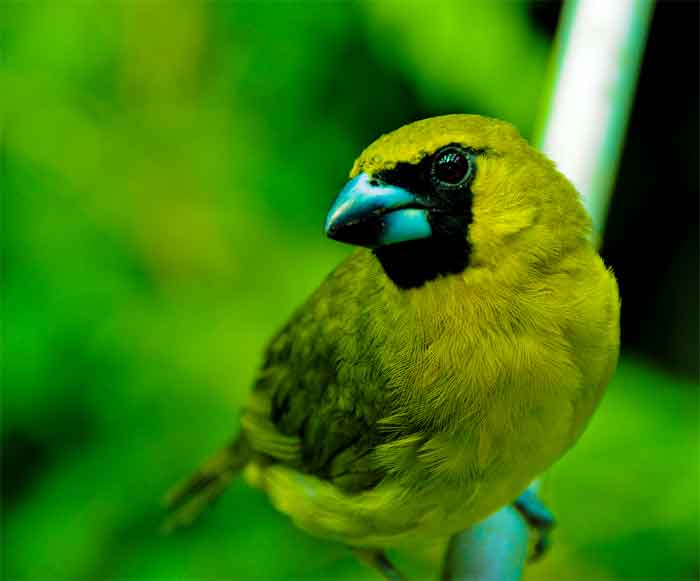
Caryothraustes canadensis (Information about this image)
Superregnum: Eukaryota
Cladus: Unikonta
Cladus: Opisthokonta
Cladus: Holozoa
Regnum: Animalia
Subregnum: Eumetazoa
Cladus: Bilateria
Cladus: Nephrozoa
Superphylum: Deuterostomia
Phylum: Chordata
Subphylum: Vertebrata
Infraphylum: Gnathostomata
Megaclassis: Osteichthyes
Cladus: Sarcopterygii
Cladus: Rhipidistia
Cladus: Tetrapodomorpha
Cladus: Eotetrapodiformes
Cladus: Elpistostegalia
Superclassis: Tetrapoda
Cladus: Reptiliomorpha
Cladus: Amniota
Classis: Reptilia
Cladus: Eureptilia
Cladus: Romeriida
Subclassis: Diapsida
Cladus: Sauria
Infraclassis: Archosauromorpha
Cladus: Crurotarsi
Divisio: Archosauria
Cladus: Avemetatarsalia
Cladus: Ornithodira
Subtaxon: Dinosauromorpha
Cladus: Dinosauriformes
Cladus: Dracohors
Cladus: Dinosauria
Ordo: Saurischia
Cladus: Eusaurischia
Subordo: Theropoda
Cladus: Neotheropoda
Cladus: Averostra
Cladus: Tetanurae
Cladus: Avetheropoda
Cladus: Coelurosauria
Cladus: Tyrannoraptora
Cladus: Maniraptoromorpha
Cladus: Maniraptoriformes
Cladus: Maniraptora
Cladus: Pennaraptora
Cladus: Paraves
Cladus: Eumaniraptora
Cladus: Avialae
Infraclassis: Aves
Cladus: Avebrevicauda
Cladus: Pygostylia
Cladus: Ornithothoraces
Cladus: Ornithuromorpha
Cladus: Carinatae
Parvclassis: Neornithes
Cohors: Neognathae
Cladus: Neoaves
Cladus: Telluraves
Cladus: Australaves
Ordo: Passeriformes
Subordo: Passeri
Infraordo: Passerida
Superfamilia: Passeroidea
Familia: Cardinalidae
Genus: Caryothraustes
Species: Caryothraustes canadensis
Subspecies: C. c. brasiliensis – C. c. canadensis – C. c. frontalis – C. c. simulans
Name
Caryothraustes canadensis (Linnaeus, 1766)
Type locality: Canada (error), corrected to Cayenne, French Guiana.
Synonyms
Loxia canadensis (protonym)
References
Linnaeus, C. 1766. Systema naturae per regna tria naturae, secundum classes, ordines, genera, species, cum characteribus, differentiis, synonymis, locis (Regnum Animale). Editio duodecima (12th Ed.), reformata. Tomus 1 (Volume 1), Pars 1 (Part 1): 1–532. Holmiæ [Stockholm]. Impensis Direct Laurentii Salvii. p. 304 BHL Reference page.
Vernacular names
português do Brasil: Furriel-do-norte
en=Yellow-green Grosbeak
es=Picogrueso verdiamarillo
The yellow-green grosbeak (Caryothraustes canadensis) is a species of grosbeak in the family Cardinalidae.
Taxonomy
In 1760 the French zoologist Mathurin Jacques Brisson included a description of the yellow-green grosbeak in his Ornithologie based on a specimen collected in Cayenne in French Guiana. He used the French name Le Gros-bec de Cayenne and the Latin name Coccothraustes Cayanensis.[2] Although Brisson coined Latin names, these do not conform to the binomial system and are not recognised by the International Commission on Zoological Nomenclature.[3] When in 1766 the Swedish naturalist Carl Linnaeus updated his Systema Naturae for the twelfth edition he added 240 species that had been previously described by Brisson.[3] One of these was the yellow-green grosbeak. Linnaeus included a terse description, used the binomial name Loxia canadensis and cited Brisson's work.[4] Linnaeus mistakenly claimed that the species occurred in Canada rather than Cayenne and introduced the specific name canadensis for Canada where the bird does not occur.[5] This species is now placed in the genus Caryothraustes that was introduced by the German naturalist Ludwig Reichenbach in 1850.[6] There are four subspecies.[7]
Distribution and habitat
It is found in Brazil, Colombia, French Guiana, Guyana, Panama, Suriname, and Venezuela. Its natural habitats are subtropical or tropical moist lowland forest and heavily degraded former forest.
References
BirdLife International (2020). "Caryothraustes canadensis". IUCN Red List of Threatened Species. 2020: e.T22723831A138395905. doi:10.2305/IUCN.UK.2020-3.RLTS.T22723831A138395905.en. Retrieved 13 November 2021.
Brisson, Mathurin Jacques (1760). Ornithologie, ou, Méthode contenant la division des oiseaux en ordres, sections, genres, especes & leurs variétés (in French and Latin). Vol. 3. Paris: Jean-Baptiste Bauche. pp. 229–230, Plate 11 fig 3. The two stars (**) at the start of the section indicates that Brisson based his description on the examination of a specimen.
Allen, J.A. (1910). "Collation of Brisson's genera of birds with those of Linnaeus". Bulletin of the American Museum of Natural History. 28: 317–335. hdl:2246/678.
Linnaeus, Carl (1766). Systema naturae : per regna tria natura, secundum classes, ordines, genera, species, cum characteribus, differentiis, synonymis, locis (in Latin). Vol. 1, Part 1 (12th ed.). Holmiae (Stockholm): Laurentii Salvii. p. 304.
Jobling, J.A. (2018). del Hoyo, J.; Elliott, A.; Sargatal, J.; Christie, D.A.; de Juana, E. (eds.). "Key to Scientific Names in Ornithology". Handbook of the Birds of the World Alive. Lynx Edicions. Retrieved 29 April 2018.
Reichenbach, Ludwig (1850). Avium Systema Naturale. Das natürliche System der Vögel. Dresden: Expedition der Vollständigsten Naturgeschichte. Plate 78.
Gill, Frank; Donsker, David, eds. (2018). "Cardinals, grosbeaks and (tanager) allies". World Bird List Version 8.1. International Ornithologists' Union. Retrieved 1 May 2018.
Retrieved from "http://en.wikipedia.org/"
All text is available under the terms of the GNU Free Documentation License

